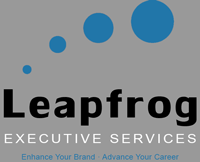Good Foundations
Category : 2022
Any competent structural engineer will tell you—a skillfully designed, and properly constructed foundation is a big deal. A good foundation—
• Creates the map for a building’s construction.
• Supports the constant and variable weight loads of a structure.
• Stabilizes a structure to withstand movement when external forces shift.
When purchasing a house in Texas, discussing the building’s foundation is more than an academic exercise . . . Seven of the top 15 U.S. cities with foundation issues are in Texas.
Some foundations are historic for their engineering genius—
• The Willis (Sears) Tower in Chicago sits on 114 reinforced concrete caissons set in bedrock and reaching 100 feet below ground.
• The Burj Khalifa Tower in Dubai reaches 163 stories into the sky while resting on 192 five-foot in diameter piles, buried 164 feet below ground.
Other foundations are well-known for what they failed to do—
• When the Canadian Pacific Railway constructed the 13-container Transcona Grain Elevator in Winnipeg in 1913, inadequate accounting for the clay soil resulted in the structure sinking one foot within the first hour of filling the containers and tilting by 27 degrees within 24 hours.
• Construction of South Padre Island’s Ocean Tower halted two years into construction when builders discovered the core of the building had dropped 14 inches. The implosion of the 31-story structure provided a short-term economic boost for the south Texas town.
• As construction of the iconic Tower of Pisa began 840 years ago, the builders spotted immediate problems with the structure’s stability. While the tower continues to settle, tourists continue to gather, much to the delight of Pisa businesses.
Enduring careers are built on solid foundations as well—consistent results, measurable impact, and quantified contributions to the people served by an organization. Without these, an executive’s career journey is as unstable and unpredictable as the gumbo clay of north Texas or the sandy uncertainty of south Florida.
Executives positioning themselves in a current role and planning for future opportunities are wise to invest attention and energy toward ensuring the supporting elements of a professional foundation are in place as well—
• An engaging biographic profile that tells the executive’s story in a compelling and informative way.
• A results-focused resume that provides as much value to the executive as it does the market, by pressing a leader to quantify his or her success at creating cashflow, improving profitability, leading growth, and developing people.
• An engaging presence on social media that aligns with and supports the executive’s market position, role, and brand focus.
Without purposeful attention, these three dimensions of a career foundation are often approached like a neighbor’s home remodeling project in a community without a HOA. A room is added here, a window is added there, a slab for another car is poured beside the standing garage until the home begins to look as much like a Rube Goldberg contraption as a house.
Like a well-designed structural foundation, the bio, resume, social media triad—
• Creates the map for telling an executive’s story and keeping that story fresh as a career journey progresses.
• Supports the executive by ensuring a personal brand is properly positioned, well-supported, and accurately clarified through organizational changes—like finding out the world’s richest person suddenly deciding to buy the company where you work.
• Stabilizes an executive to quicky adapt to the market, prepare for an unexpected change, or orchestrate a late-career innovation in response to the external forces that buffet every organizational leader.
If the first four months of 2022 have told us anything, it is to prepare for another wild ride. What is ahead will look vastly different from the pandemic-driven roller coaster of the past two years. The market volatility, economic uncertainty, and a responding need for personal adaptability will be greater than ever.
If your foundation isn’t as solid as you’d like, call Leapfrog Executive Services. We’re experts in career strategy, executive coaching, and creating the piers that support a foundation of executive success.
